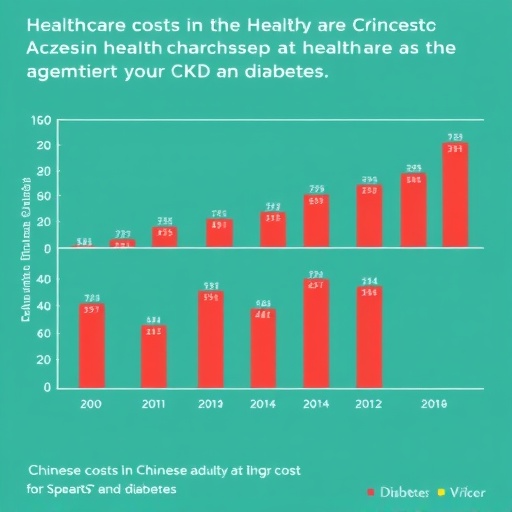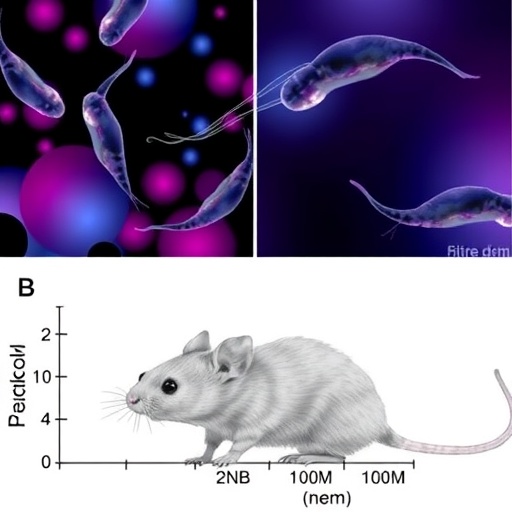A revolutionary leap in understanding psoriasis, a chronic inflammatory skin condition that afflicts millions worldwide, has emerged from a new study employing cutting-edge single-cell transcriptomics. This breakthrough research, carried out by Chen et al., utilizes the power of high-resolution gene expression profiling at the single-cell level, unmasking previously hidden cellular and molecular mechanisms driving disease progression. Their findings, recently published in Nature Communications, spotlight the critical involvement of the chemokine signaling axis CXCL16/CXCR6 in the pathogenesis of psoriasis, truly reshaping how we may approach therapeutic interventions in the future.
Psoriasis has long challenged scientists and clinicians alike due to its complex etiology, involving intricate interactions between immune system components, skin barrier functions, and genetic predispositions. Despite the availability of multiple treatments, many patients continue to endure relapses and incomplete responses to therapy. Recognizing this unmet clinical need, Chen and colleagues sought to dissect the psoriasis microenvironment with unprecedented granularity. By leveraging single-cell RNA sequencing (scRNA-seq) in human psoriatic skin samples alongside genetically engineered mouse models, the team achieved a nuanced cellular map of disease-associated changes.
At the heart of this investigation lies the intracellular enzyme Ube2l3, an E2 ubiquitin-conjugating enzyme previously implicated in immune regulation but not thoroughly examined in psoriasis. The researchers engineered mice with targeted deletion of Ube2l3 restricted to epidermal cells, providing an innovative model to evaluate the enzyme’s specific contributions within the skin milieu. These Ube2l3-deficient mice developed psoriasis-like phenotypes, confirming a pivotal role in disease onset and progression, and serving as a powerful experimental counterpart to the human data.
Single-cell transcriptomic analysis revealed that the lack of Ube2l3 in the epidermis leads to the aberrant expression of chemokines, key signaling molecules that recruit immune cells. Among these, CXCL16 emerged strikingly upregulated, acting as a beacon for immune cell infiltration. Correspondingly, the chemokine receptor CXCR6 demonstrated enhanced expression on immune cells that populate psoriatic lesions, suggesting a functional communication axis that perpetuates skin inflammation. This previously underappreciated CXCL16/CXCR6 signaling pathway was shown to be a critical driver in maintaining the chronic inflammatory loop characteristic of psoriasis.
The mechanistic insights gained from these detailed analyses reveal that the loss of Ube2l3 disrupts the ubiquitination landscape within keratinocytes, the predominant epidermal cells, thereby affecting downstream gene regulatory networks governing chemokine production. Through this molecular cascade, excessive CXCL16 secretion recruits CXCR6-positive immune subsets, including T cells, which amplify the inflammatory response. This discovery not only pinpoints a new molecular culprit in psoriasis but also introduces the CXCL16/CXCR6 axis as a viable target for drug development.
Importantly, the integration of human psoriasis scRNA-seq data with murine genetic models allowed the authors to validate their findings across species, enhancing the translational relevance of their conclusions. This cross-species approach underscores the power of comparative transcriptomics in dissecting complex diseases and avoiding pitfalls inherent in singular model systems. It also strengthens the argument for targeting chemokine pathways as potential therapeutic avenues.
Beyond elucidating epidermal-immune interactions, the study highlights the broader implications of ubiquitin-mediated signaling regulation in skin diseases. Given ubiquitination’s central role in protein turnover and signaling pathway modulation, the findings unravel how dysregulation at this fundamental level can tip the balance towards chronic inflammation. Such paradigm shifts may pave the way for reimagining other inflammatory and autoimmune disorders through a similar molecular lens.
Chen et al.’s work also contributes substantially to the growing appreciation of chemokine networks as critical modulators in inflammatory skin diseases. While classical psoriasis treatments have predominantly targeted cytokine pathways like TNF-α and IL-17, this research convincingly argues for expanding the therapeutic targets to include chemokine axes that govern immune cell trafficking. The CXCL16/CXCR6 pair, in particular, may serve as both diagnostic biomarkers and therapeutic targets, opening doors to personalized medicine approaches.
Moreover, the use of single-cell transcriptomics exemplifies the technological evolution that is transforming biomedical research. This powerful methodology provides nuanced resolution of cellular heterogeneity and gene expression dynamics, unraveling complex biological systems at an unprecedented scale. The ability to trace cell lineage, activation states, and intercellular communication deepens our comprehension of disease pathophysiology and informs precision therapeutic strategies.
While these findings signify a major advancement, the authors acknowledge the need for further investigations into the potential side effects and safety profiles of targeting the CXCL16/CXCR6 axis. Understanding how such interventions may impact normal immune surveillance and skin homeostasis will be critical before clinical application. Nonetheless, the therapeutic promise highlighted by this study signals a hopeful future for patients grappling with psoriasis.
This study epitomizes how integrative, multidisciplinary research combining immunology, genetics, molecular biology, and advanced computational analyses can yield transformative insights. It sets the stage for the development of novel biologics or small molecules designed to modulate chemokine receptor signaling, potentially revolutionizing treatment paradigms for psoriasis and related inflammatory disorders.
In conclusion, by unraveling the molecular intricacies of psoriasis through single-cell transcriptomics and innovative mouse genetics, Chen et al. have illuminated the central role of the CXCL16/CXCR6 chemokine axis. Their comprehensive findings not only advance fundamental understanding but also chart a promising path toward more effective and targeted therapies. This landmark research propels the field forward, offering renewed hope for patients and clinicians confronting chronic skin inflammation.
As we anticipate the next chapters of research building upon these discoveries, the integration of molecular insights into clinical practice remains a paramount goal. This study exemplifies how modern scientific rigor paired with novel technologies can unravel complex diseases, ultimately translating into tangible benefits that improve lives and reshape healthcare landscapes worldwide.
Subject of Research:
Psoriasis pathogenesis and the role of epidermal Ube2l3 and the CXCL16/CXCR6 chemokine axis.
Article Title:
Single cell transcriptomics of human psoriasis and epidermal specific Ube2l3 deficient mice highlight CXCL16/CXCR6 involvement in psoriasis development.
Article References:
Chen, XY., Ye, LR., Fu, NC. et al. Single cell transcriptomics of human psoriasis and epidermal specific Ube2l3 deficient mice highlight CXCL16/CXCR6 involvement in psoriasis development.
Nat Commun 16, 9084 (2025). https://doi.org/10.1038/s41467-025-64106-6
Image Credits: AI Generated
Tags: cellular mechanisms psoriasischronic inflammatory skin conditionCXCL16 CXCR6 psoriasisdisease progression psoriasisgene expression profiling psoriasisimmune system interactions psoriasispsoriasis microenvironment analysispsoriatic skin samplesscRNA-seq technologysingle-cell transcriptomicstherapeutic interventions psoriasisUbe2l3 enzyme role





